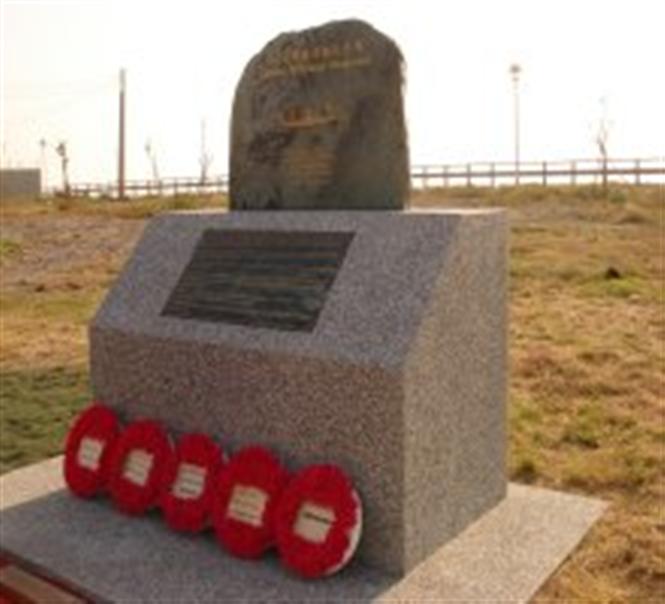Taiwan Hellships Memorial
Description
The memorial is an etched rock sitting on top of a stone base with an inscribed plaque.
History
From early 1942 to spring of 1945, the Japanese shipped prisoners of war captured in the Philippines, Hong Kong, Singapore, and Java to forced labour camps in Japan, Taiwan, Myanmar, and the Dutch East Indies Archipelago. The prisoners called them 'Hellships' because boarding one was like entering hell on earth. They were so crammed that one could barely stand or lie down. They were starved and beaten, the Japanese only providing them with minimal amounts of food and water. Thousands either died of hunger or disease, or were killed during the voyage.
One such vessel was the Enoura Maru. It had previously been used to transport horses and was still filthy with manure when about 1,040 POWs were forced into the second hold aft of the bow. Leaving the Philippines on 27 December 1944, the Enoura Maru reached Kaohsiung, Formosa (Taiwan) on 31 December. Suffering terribly from hunger, thirst, disease and the filth that pervaded the hold, the prisoners were left for days as the Japanese celebrated their New Year holiday. Thirty four men died. On 9 January 1945, the Enoura Maru, docked in the waters of the Kaohsiung Harbour, was bombarded and sunk when a U.S. war plane mistook it for a naval vessel. Over 350 prisoners were killed. The Japanese provided no medical supplies, leaving the wounded in the hold with the mutilated bodies for two days. Many of the injured died in the next few days.
On 9 January 2005, the Taiwan Prisoner-of-War Camp Association held a special ceremony at the Kaohsiung Harbour, the '60th Memorial Commemoration of the Prisoner-of -War Vessel Enoura Maru'. In December of that year, the Kaohsiung City Government consented to the request of the Association to erect a memorial and on 26 January 2006 the Taiwan Hellships Memorial was dedicated at Qi Jin Beach, Kaohsiung Harbour. It commemorates the almost 30,000 Allied POWs who travelled to and from the Taiwan camps or stopped here en route to Japan, Korea and Manchuria, or China, during the Second World War. The monument took on a special historical implication as it was positioned in front of the previous mass burial grave of the 350 POWs killed in the bombing of the Enoura Maru.
Construction Information
No information available at this time.
Location
Cijin District, Taiwan.
Qi Jin Beach, Kaohsiung Harbour. The memorial stands in the land reserved for the Chi-Chin War and Peace Memorial Park, north of the Chi-Chin Windmill Park and in front of the Chi-Chin Ocean Park.
